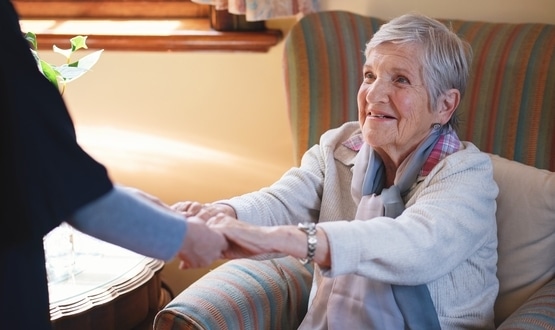Visiting partner
- 23 March 2005
 Quin Parker
Quin Parker
Joseph Ternullo, assistant director of Harvard-linked community care institute Partners HealthCare, has opinions on the NHS that won’t be found in many tabloid newspapers.
“The quality of healthcare in the UK is considered among the finest in the world,” he says. “With your healthcare system you have an enormous asset and a national treasure. To my knowledge, the UK is a medical hub where people from around the world come for care.”
Ternullo is visiting the UK on a research fellowship at Kingston University, south-west London. The Mobile Information Network Technologies (MINT) research team, headed by Professor Robert Istepanian, are researching the applications and effects of telecare while working on cutting-edge telemedicine applications such as remote infrasound monitors.
The point of the visiting fellowship is to open up a dialogue between research organisations in Harvard and in Kingston. “We have been invited to come here and talk and share knowledge,” he said. Ternullo’s visit and seminar, as well as a great deal of the work undertaken in Kingston, is sponsored by Vodafone.
Urgency
“Telemedicine happens every single day in the US and no doubt happens in the UK. Many people have probably never seen their radiologist,” he says. “Telemedicine is about bringing together, it’s about access, not about distance. Another useful way to think about it is moving medical knowledge as opposed to moving a patient.”
Ternullo’s work, which is currently focussing on how telemedicine can best operate under Medicare and Medicaid, is driven by a sense of urgency; in the very near future, remote medicine will not be an expensive luxury but a necessity: “The baby boomer generation in the US is an immense bubble of population that is moving towards their paid Medicare and Medicaid healthcare years. They expect to be cared for equally to their parents and grandparents.”
As more and more people need more care, the pace of hospital building and expansion of physical healthcare services will not be able to keep up. The conversion point, he explains, will be when people enter care homes or have to be taken into hospital long-term. “Care is moving out of the hospital,” he says. “We have to stave off the point of conversion where some of the patients move from independent living to assisted living.”
“Telemedicine is about keeping people out of hospitals so that they can go about enjoying their everyday lives. We want to keep people out of care environments as long as possible.”
Community
According to Ternullo, in the US, three percent of the patient population accounts for 40 percent of the healthcare costs. Therefore, many services can, indeed must be transferred out of the hospital into the community. Ternullo takes as his example blood-pressure monitoring services. “Normally speaking in healthcare, the longest line is in haematology checks… That’s individual monitoring of blood pressure. It would be better if we can devise a smaller, passive system which scans blood pressure on an ongoing basis, perhaps by a watch on the wrist.”
Data could be transmitted back to the caregiver, explained Ternullo, and if there are any problems such as abnormally high readings, a nurse could call the patient and check to see if the patient needs treatment – or check if the reading simply came from, for example, strenuous exercise. “There’s some viability there,” said Ternullo. “That recurring monitoring would result in better quality care.”
Ternullo rejected outright the suggestion that many people may perceive this as a degradation in the quality of their health service, as a way of ‘out-sourcing’ healthcare staff to technology. For him, this technology is all about new ways of delivering care.
Another innovative idea put forward by Ternullo in his presentation at MINT in Kingston involved a diabetes management and recording system by mobile phone aimed at teenagers that would not only solve the need for regular check-ups at the GP, but also reward careful management of blood sugar levels with ringtones, extra phone minutes or game downloads.
Pace of research
Telemedicine research is by nature steady and careful, said Ternullo, and perhaps this is why things haven’t progressed in the field quite as quickly as in other areas of business. “In the financial world, I can access my bank in Boston from anywhere in the globe. In London I can withdraw pounds, in Italy I can withdraw euros, in Israel shekels. But if I have a medical malady it’s virtually impossible to have information about that transferred down the road.”
“It’s the banalty if the decisions that are made in healthcare. We operate in a very stable environment. Innovations are made and a slow, methodical way.” Ternullo cites the principle of “first, do no harm”. You can’t tinker easily with healthcare technologies because if you do, you run a very real risk of impacting on patient care.
Another reason is cost. Healthcare funding is “a strained environment,” says Ternullo. “A total of 13 percent of GDP [in the US] is spent on healthcare.” However, there are competing interests for funds. “There are challenging issues that relate to deployment of new technology. After that decision is made, who will pay for it?”
“Telemedicine will never replace face-to-face care,” says Ternullo. “But it can provide good quality care, therefore freeing up the patient room for people who are sicker.”
Related stories
Tele-echography robot allows remote patient scans
Links
Mobile Information Network Technologies (MINT), Kingston University
Partners HealthCare




